I'm facing a problem with a conditional observer method that is not being called. Here is the code, starting with a junit test:
import static org.hamcrest.CoreMatchers.notNullValue;
import static org.hamcrest.CoreMatchers.nullValue;
import static org.junit.Assert.assertThat;
import javax.enterprise.inject.Instance;
import javax.enterprise.inject.se.SeContainer;
import javax.enterprise.inject.se.SeContainerInitializer;
import org.apache.logging.log4j.LogManager;
import org.apache.logging.log4j.Logger;
import org.junit.After;
import org.junit.Before;
import org.junit.Test;
public class CDIMinimalConditionalObserverTest
{
private final static Logger LOGGER = LogManager.getLogger(CDIMinimalConditionalObserverTest.class);
private SeContainer container;
@Before public void before()
{
LOGGER.debug("before");
final SeContainerInitializer initialiser = SeContainerInitializer.newInstance();
container = initialiser.initialize();
}
@After public void after()
{
container.close();
LOGGER.debug("after");
}
@Test public void testObservation_observationInManagedNonExistentConditionalObservers()
{
CDIMinimalConditionalObserverEvent event = new CDIMinimalConditionalObserverEvent();
container.getBeanManager().fireEvent(event);
assertThat(event.msg, nullValue());
}
@Test public void testObservation_observationInManagedExistentConditionalObservers()
{
// create observer by selection
Instance<CDIMinimalConditionalObserver> instance = container.select(CDIMinimalConditionalObserver.class);
CDIMinimalConditionalObserver observer = instance.get();
assertThat(observer, notNullValue());
CDIMinimalConditionalObserverEvent event = new CDIMinimalConditionalObserverEvent();
container.getBeanManager().fireEvent(event);
observer.doSomething();
assertThat(event.msg, notNullValue());
}
}
Here is the class with the conditional observer method:
import javax.annotation.PostConstruct;
import javax.annotation.PreDestroy;
import javax.enterprise.context.ApplicationScoped;
import javax.enterprise.event.Observes;
import javax.enterprise.event.Reception;
import org.apache.logging.log4j.LogManager;
import org.apache.logging.log4j.Logger;
import de.jmda.sandbox.cdi.se.CDIMinimalTests.SimpleInnerEvent;
/**
* {@link Model} annotation assigns non-dependent scope and thereby makes it possible to make {@link
* #observation(SimpleInnerEvent)} conditional
*/
@ApplicationScoped public class CDIMinimalConditionalObserver
{
private final static Logger LOGGER = LogManager.getLogger(SimpleConditionalObserver.class);
public CDIMinimalConditionalObserver()
{
LOGGER.debug("constructor");
}
@PostConstruct public void postConstruct()
{
LOGGER.debug("post construct");
}
@PreDestroy public void preDestroy()
{
LOGGER.debug("pre destroy");
}
public void observation(@Observes(notifyObserver=Reception.IF_EXISTS) CDIMinimalConditionalObserverEvent event)
{
event.msg = "observation";
LOGGER.debug(event.msg);
}
public void doSomething()
{
LOGGER.debug("doing something");
}
}
And finally here is the event class:
public class CDIMinimalConditionalObserverEvent { String msg; }
The test fails because event.msg is null though it shouldn't be. Logging output does not show any "observation" output. The test passes if the condition is removed.
Any ideas? Thanks!

